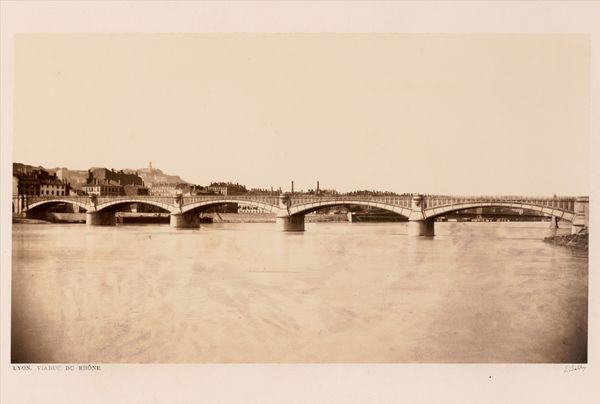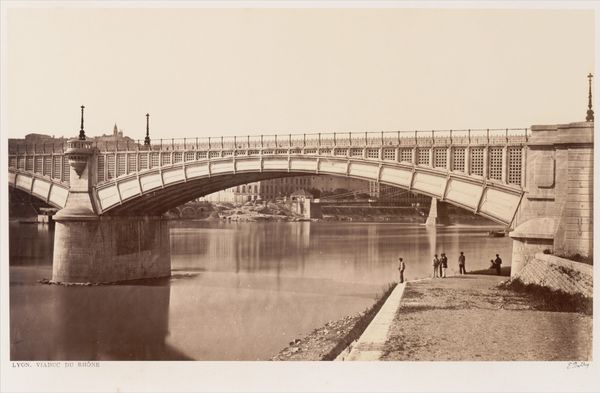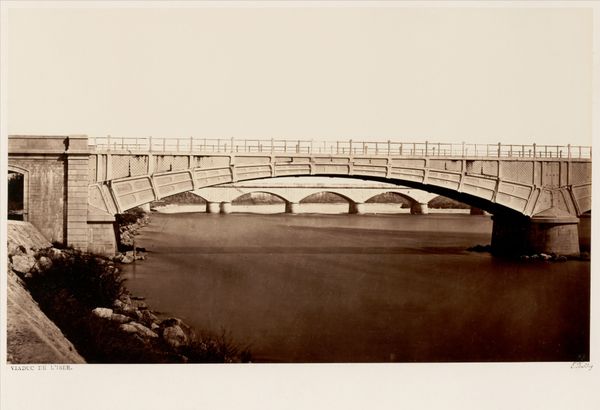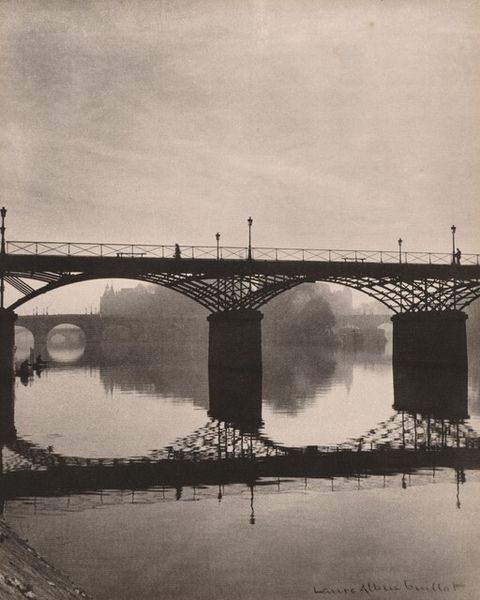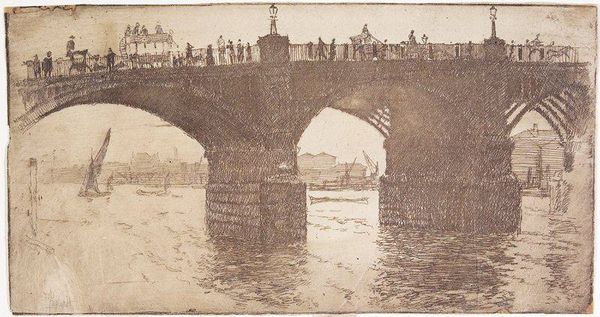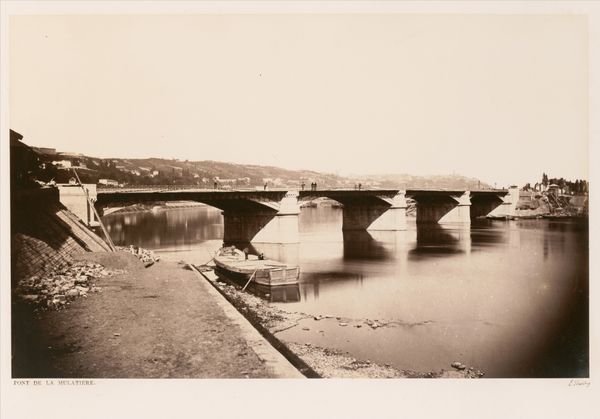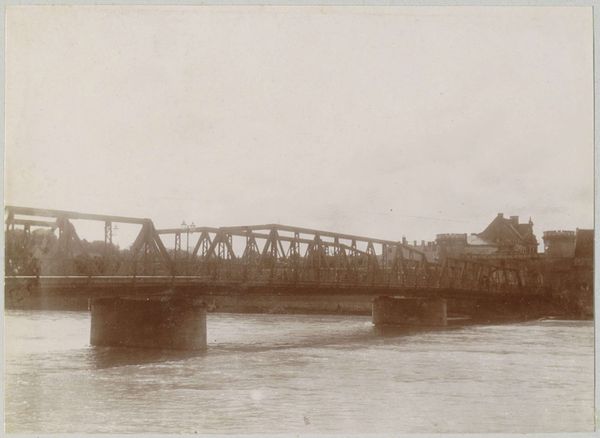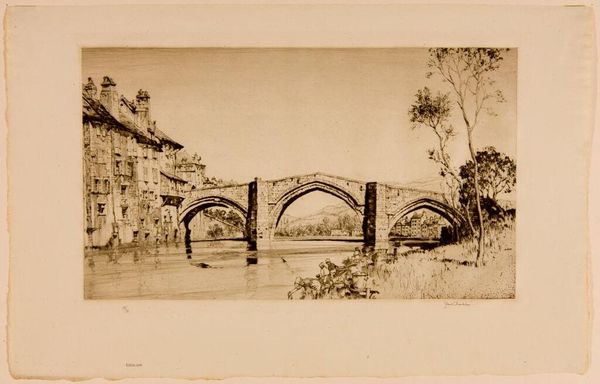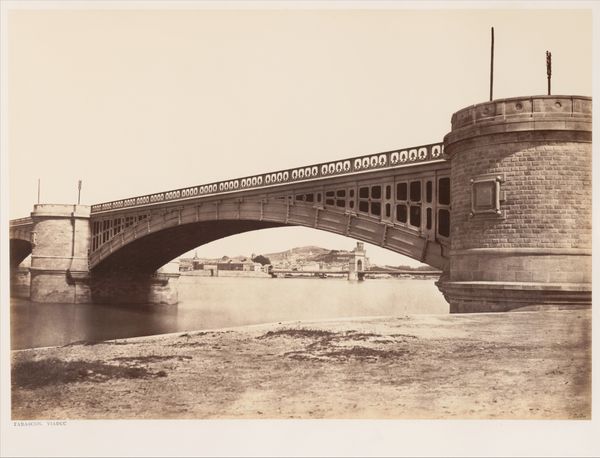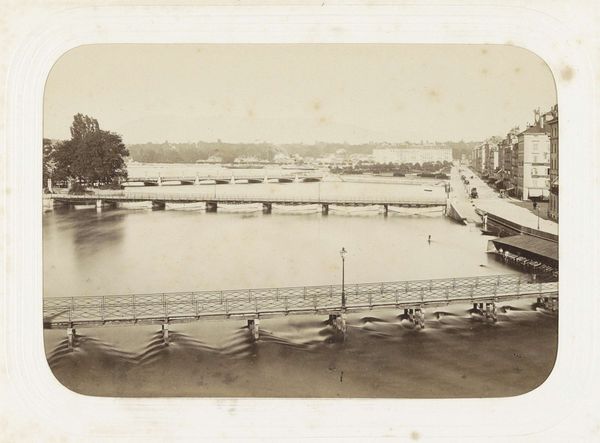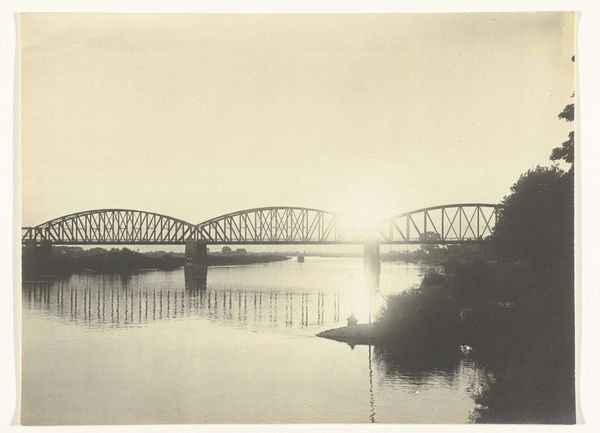
Dimensions: Image: 28.3 x 44.3 cm (11 1/8 x 17 7/16 in.) Mount: 46 x 60.5 cm (18 1/8 x 23 13/16 in.)
Copyright: Public Domain
Curator: This albumen print, titled "Pont de la Mulatiere," was created by Édouard Baldus between 1860 and 1862. The bridge depicted is quite monumental. What's your initial take on the piece? Editor: My first impression is the dominance of this newly constructed bridge as a signifier of progress, but it simultaneously seems so static and permanent. Curator: Yes, Baldus has captured not only a modern marvel of engineering but also the labour embedded within the image. Consider the workers scattered on the bridge and by the river. They give scale, emphasizing the human element involved in creating infrastructure. Editor: Exactly. The figures appear posed but I imagine the construction site was far from safe, highlighting their precarity. I wonder if Baldus was conscious of representing this power dynamic, as photography at the time was mostly dominated by wealthy classes. Curator: His employment on several state-sponsored projects would lead one to think about the means of production during this time. Photography involved cumbersome equipment and toxic chemicals; creating an image of this scale was a feat of industrial, not just artistic, processes. The albumen printing process involved coating paper with egg whites to create a glossy surface to hold the photographic chemicals. Editor: Fascinating how such an arduous material process stands in contrast to the supposed immediacy of the photographic image. Thinking about the choice to focus on the bridge in this historical moment of rapid urban and industrial expansion raises questions about power and surveillance. Is Baldus implicitly glorifying the state and its grip on resources? Curator: The relationship between industry, labor, and technological advancements would be ever changed. Examining Baldus’ "Pont de la Mulatiere" from this point forward requires acknowledgement of those contextual implications, yes. Editor: Indeed. I can’t help but ponder on the ecological effects this form of development enacted. Curator: Agreed. Studying the image this way makes you conscious of these complex aspects of social and material change. Editor: It gives new perspective for sure. A lens to evaluate our role in modern culture with a newfound conscientiousness of both material and social forces at play.
Comments
No comments
Be the first to comment and join the conversation on the ultimate creative platform.
